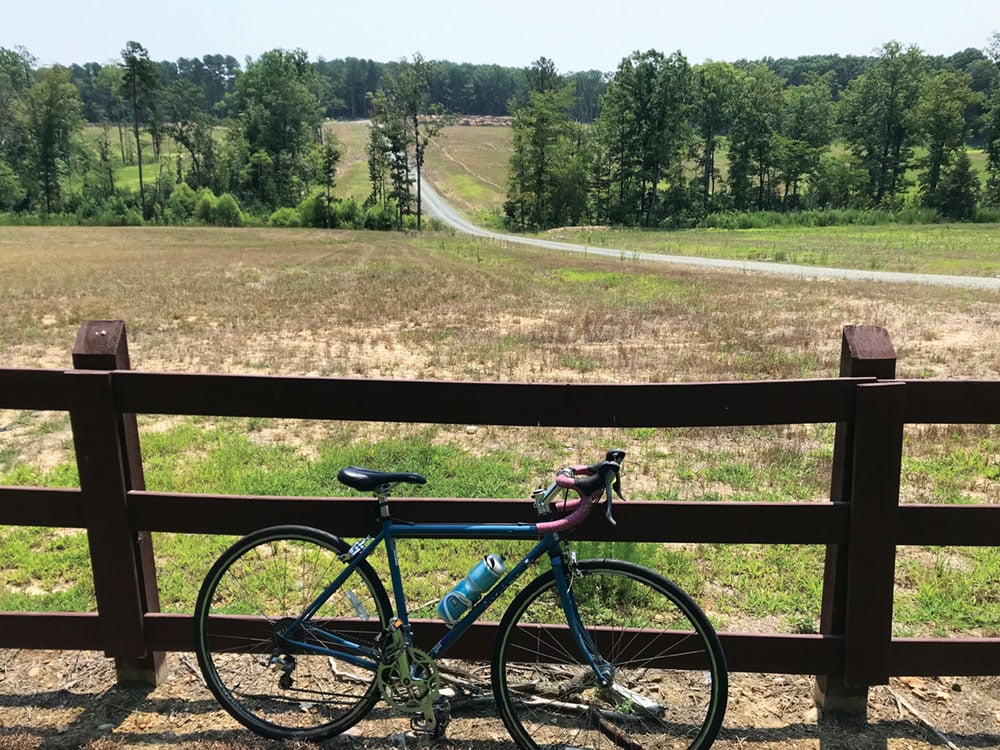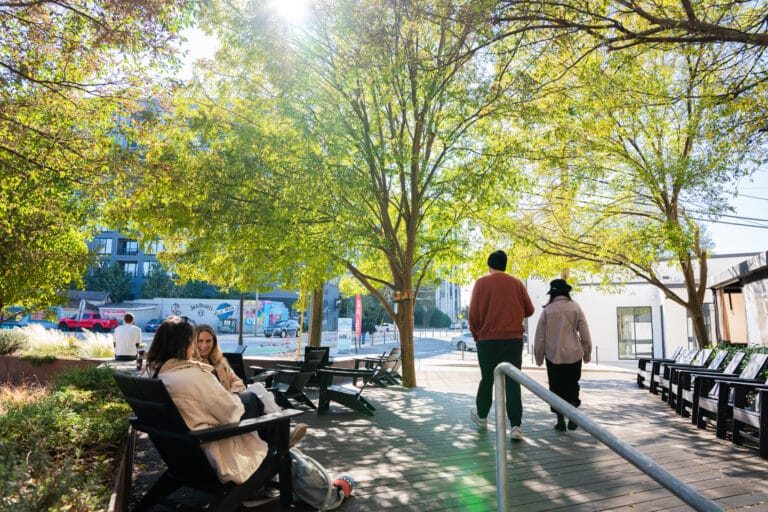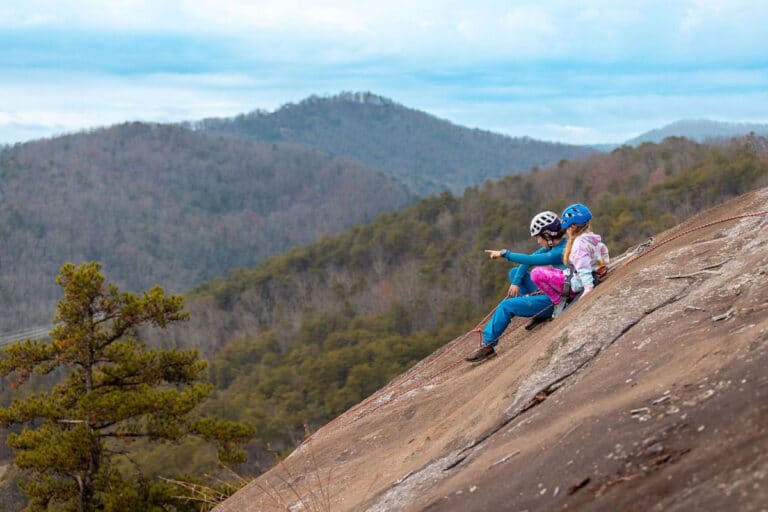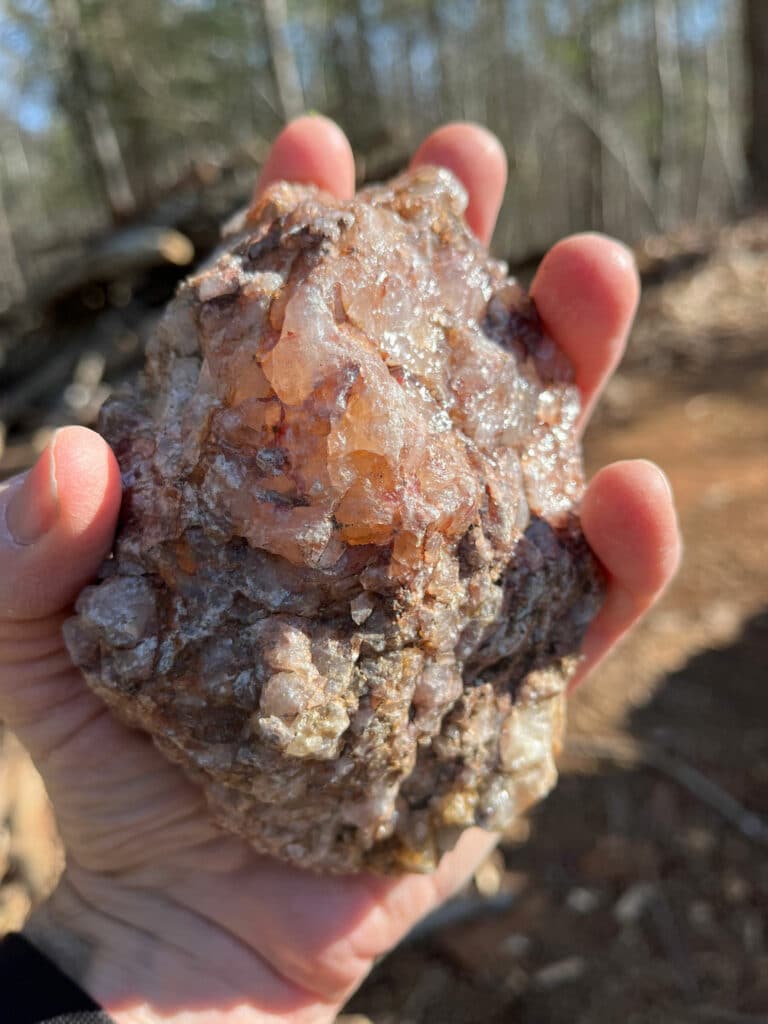A year into the pandemic, as spring bloomed again, I felt the uncontrollable itch to explore. Having hiked every nearby trail several hundred times, I rolled my neglected bike into the yard, inflated the tires, and lubed the chain. For years, the only riding I’d done in North Carolina was commuting to work, an easy, mostly flat two miles I covered in a leisurely fifteen minutes. Road riding was for old guys with big calves and a closet full of brightly colored spandex, not a stop-and-smell-the-roses biker like myself.
But my restlessness was unquenchable by walks or drives, and I couldn’t fly. That left Shirley the Surly, my steel frame, baby blue road bike with pink handlebar tape and 28-inch tires (I am prone to tipping over).
I consulted a map, noting nearby roads I’d seen serious riders on, but left my phone at home, seeking to soften the addiction I’d developed during a year of isolation. Also I had no interest in tracking my mileage or speed, which I already knew would be pathetic. After a year of calculations and stasis, I rode off into the unknown, propelled by the jittery thrill of true adventure.
As I kid, I had a red bike with a yellow banana seat. I outgrew it and didn’t ride again until I was in my 30s, living in Chicago, where biking was the best way to get around a city with wide streets and serious traffic (at least when there wasn’t snow on the ground). I roamed from Rogers Park to Hyde Park, along the lake and down suburban greenways. On my bike I felt fast and free, invigorated by streets full of surprises—near downtown, I rode by a fenced-in pasture where horses grazed, ignoring me as I stared slack-jawed. I kept pedaling, joyfully gorging on the sights and smells of the city. After I moved to North Carolina, I often dreamed I was in Chicago on my bike, asphalt racing by beneath my front tire.
My first N.C. road ride was not easy—I was out of shape and, having cut my teeth on Midwest flatness, the slightest scent of an incline sent me into a panic. As I rolled out of town, I decided I was riding for pleasure not exercise. I’d go however far I wanted, heading home when it stopped being fun.
I faced the first rise in the road, rippling with uncertainty about whether I’d make it to the top. I briefly considered giving up, but figured I should try at least once. My pace slowed as I rapidly downshifted, clicking through gears till I got to the last one. I clenched the handlebars and kept pedaling, thighs aflame, heart threatening to explode. When I got to the top of the “hill” (a term I use loosely), I rolled into the grass beside the road and gulped water and air. Exhilarated and endorphined, I celebrated. Small hill, big win, I thought, my inner monologue having disintegrated to caveman. Then I turned back toward home, the wind high-fiving me as I sped down the slope I’d just climbed.
A week later I went out again, grinding up the same hill and then the one after. Each week I rode a little farther, discovering wide fields of buttercups and hay bales, a Methodist church next to a silent cemetery, a crumpled barn with broken lighting that looked like the dream wedding venue for a witch. As I coasted back into town, I waved at the cows at the dairy farm, chewing slowly like the horses in Chicago, lazing in the shade as I would do as soon as I got home.
The rides got easier, more fun, with a sense of wonder and freedom I didn’t expect to find on rural roads. I am still slow as shit on my bike, but I don’t care. The pandemic shrank my world, turning a ten-mile ride into an exciting vacation to a foreign land. Slogging up and surging down the tiny hills around my town is a delight and a triumph. I feel as if I have taken the yellow jersey in a stage of the Tour de France, as if I have managed to survive something very serious indeed and even enjoy myself along the way.








